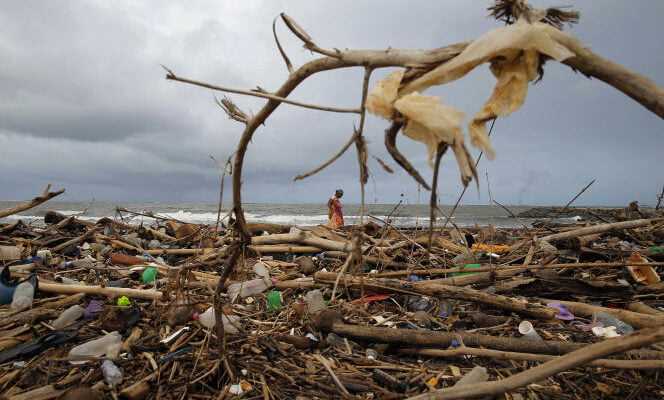The image speaks for itself: “From the smallest plankton to the biggest whale”, plastic is omnipresent in the oceans, warns, Tuesday, February 8, the WWF. The World Wide Fund for Nature stresses that this plastic invasion threatens marine biodiversity and calls on world leaders to quickly commit to a treaty on the subject.
A few weeks before a UN environment assembly which could launch negotiations on such an agreement, the WWF publishes a voluminous report on the impacts of plastic pollution on the oceans, biodiversity and marine ecosystems. Synthesis of the conclusions of more than 2,000 separate scientific studies on these questions.
First observation, this contamination “has reached all parts of the oceans, from the surface to the deep seabed, from the poles to the coasts of the most isolated islands”. Between 19 and 23 million tonnes of plastic enter the world’s waters every year, with a good part of it ending up at sea, according to estimates. A growing danger, even if the WWF recognizes a lack of data on the possible repercussions on humans of this presence of products with chemical components.
The number of microplastics is expected to double by 2050
The products are largely single-use plastics, which more and more countries are banning but which still constitute more than 60% of marine pollution. They degrade as they stay in the water, becoming smaller and smaller, until “nanoplastic”, of a size less than one micrometer (thousandths of a millimeter).
So that, even if no more plastic arrived in the ocean, the number of microplastics should double there by 2050. However, according to estimates quoted by the WWF, the production of plastic in the world should double by ‘by 2040. Industry representatives, however, believe it is likely that production will slow down and avoid this doubling.
But for Eirik Lindebjerg, responsible for the plastic dossier at the WWF, “we are reaching a saturation point for marine ecosystems which poses a threat not only to specific species but affects the entire ecosystem”. Beyond the iconic photos of seals or turtles struggling with plastic bags or broken fishing nets, the entire food chain is affected. A 2021 study thus listed 386 species of fish having ingested plastic out of 555 tested.
According to other scientists, examining one of the major commercial fishing species, up to 30% of a sample of cod caught in the North Sea had microplastics in the stomach. On the herring side, a study found microplastics in 17% of a sample caught in the Baltic.
Birds are also on display. In the northwest Atlantic, 74% of seabirds examined by one study had eaten plastic; 69%, according to another study in Hawaii.
Limits already reached in the Mediterranean
Eirik Lindebjerg compares the situation to the climate crisis and its “carbon budgets”maximum amount of CO2 that can be released into the atmosphere before certain consequences. “It’s the same with plastic. What we show in this report is that there is a limit to the pollution that our ecosystems can absorb,” continues the expert. A limit already reached on the microplastic side in several points of the globe, points out the WWF, in particular in the Mediterranean, in the Yellow and East China Seas (between China, Taiwan and the Korean Peninsula) and in the Arctic sea ice.
“We have to look at the issue as one of a finite system that does not absorb plastic and that is why we have to move towards zero emissions, zero pollution, as fast as possible”, insists Eirik Lindebjerg. Because seeking to clean up the oceans is “extremely difficult and expensive”, and it is much cheaper and more effective to act upstream.
WWF therefore calls for the rapid start of talks with a view to drawing up an international agreement on plastics. The subject will be on the menu of a UN meeting on the environment, from February 28 to March 2, in Nairobi.
The agreement should at least, according to the WWF, make it possible to establish world standards of production and “recyclability” real. “And which could also lead to the disappearance of certain products that we do not need”wants to hope Eirik Lindebjerg.

Also listen Plastic, from opportunity to disaster
